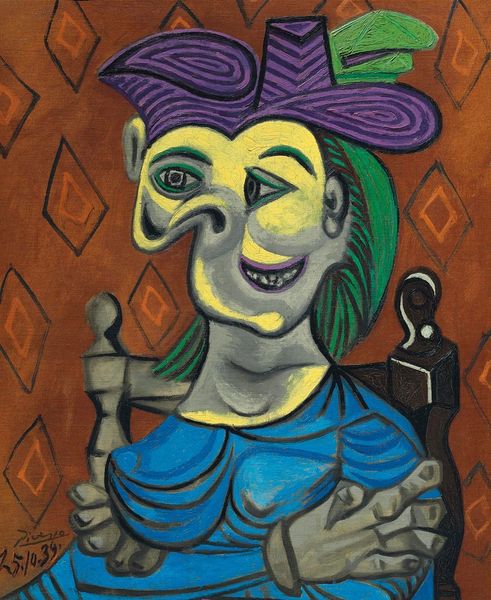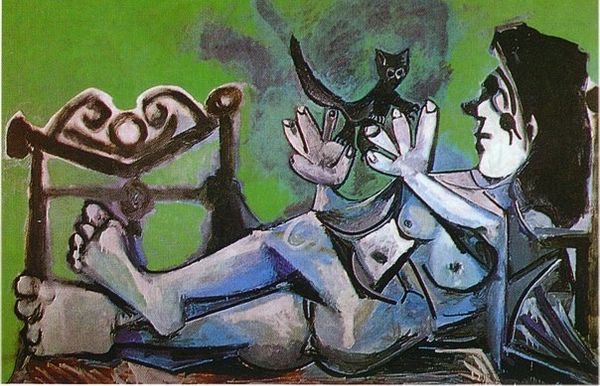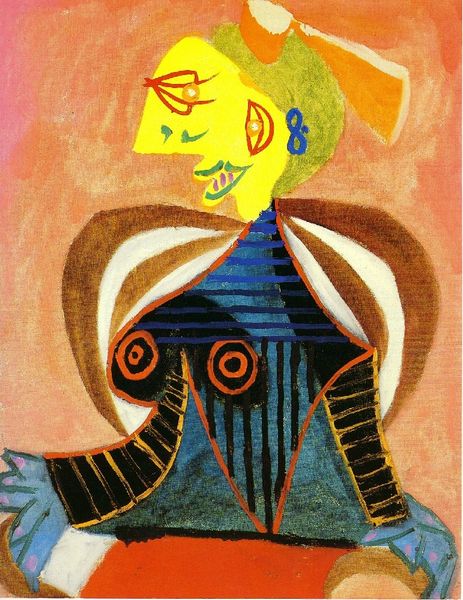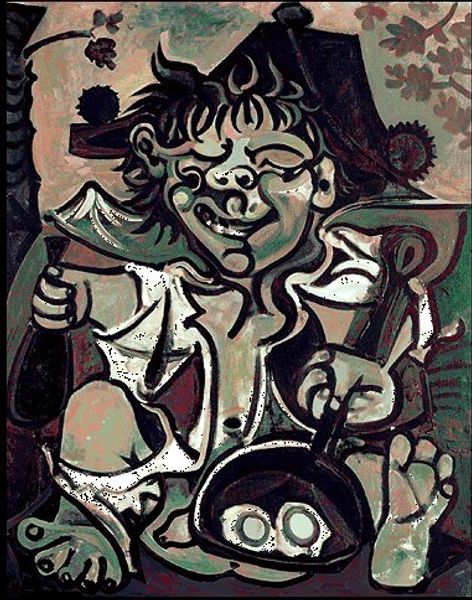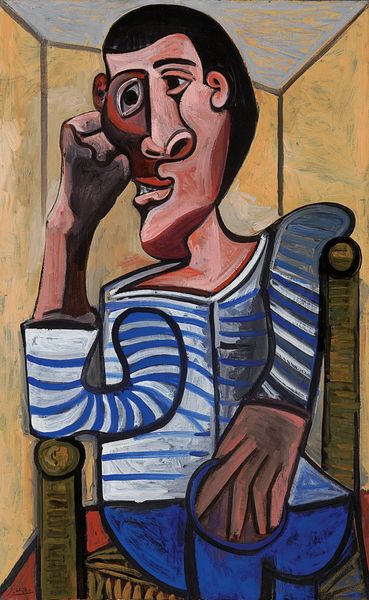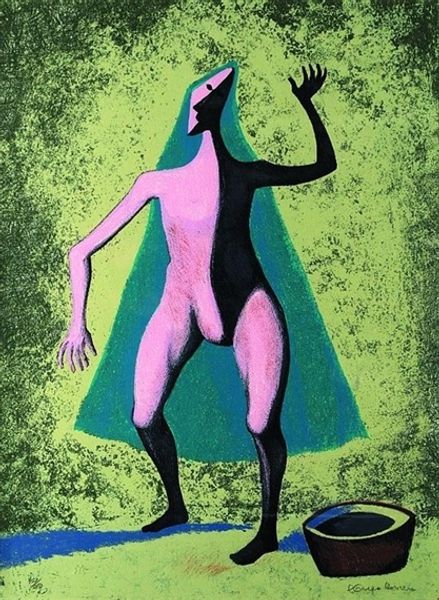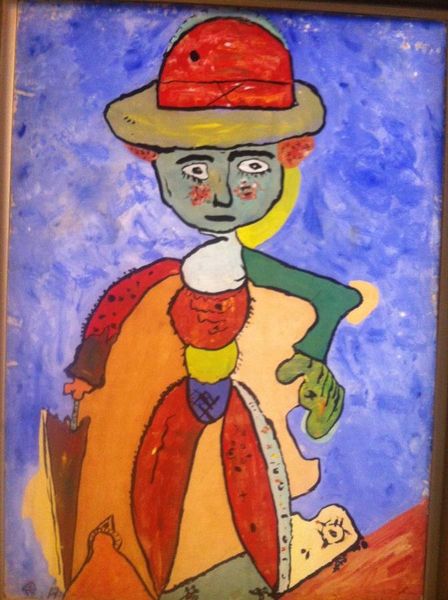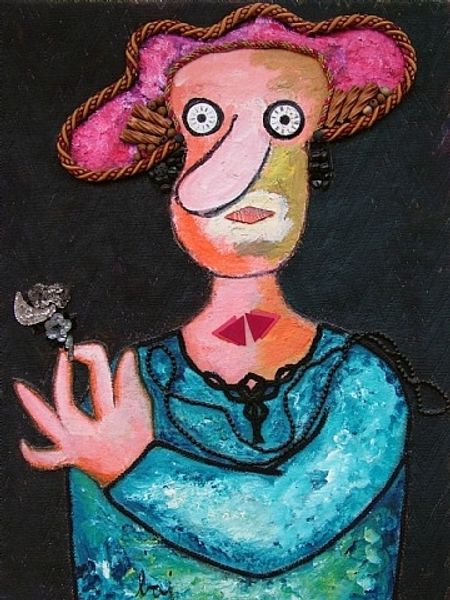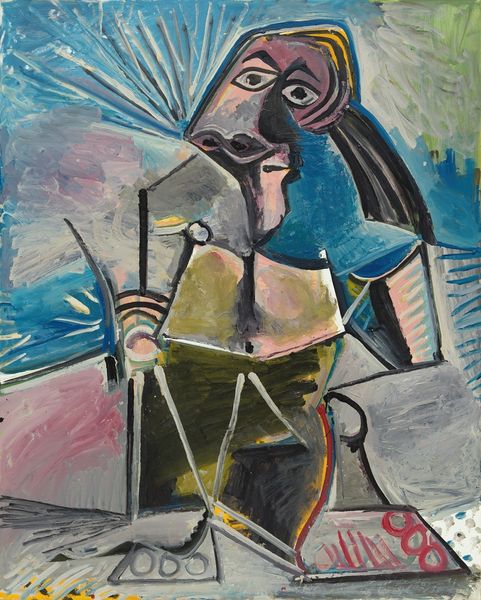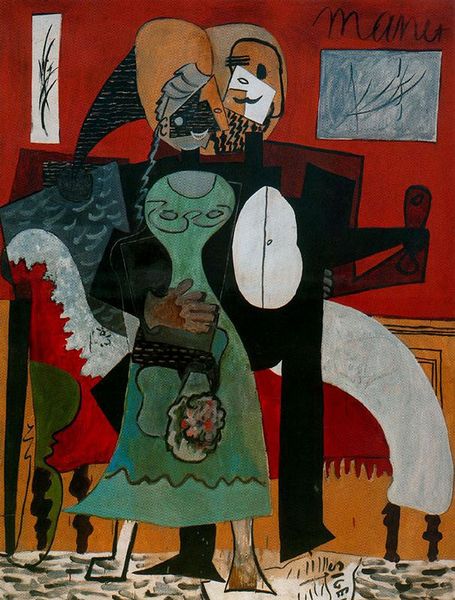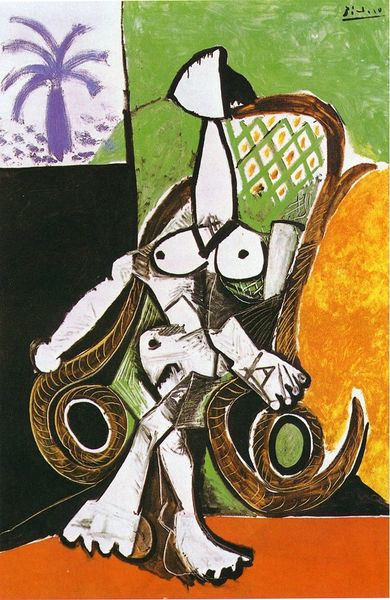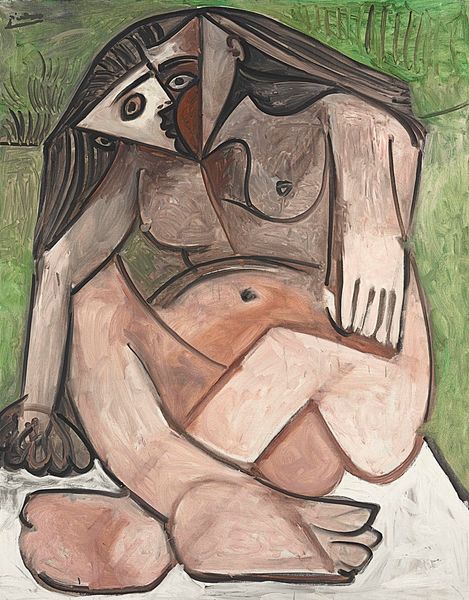
painting, oil-paint
#
portrait
#
art-deco
#
cubism
#
painting
#
oil-paint
#
figuration
#
child
#
portrait art
Dimensions: 130 x 97.3 cm
Copyright: Pablo Picasso,Fair Use
Curator: Painted in 1941, this is Picasso’s “Boy with a Langosta,” an oil on canvas residing here at the Musée Picasso. Editor: What immediately strikes me is the odd sense of displacement. The fractured forms, particularly in the boy's face, coupled with the unsettling presence of the lobster, it's all very disorienting. Curator: That disorientation might stem from the tumultuous period in which Picasso created this work. Paris was under Nazi occupation, a situation impacting artists and their practices deeply. The fractured form and emotional tenor arguably reflect the anxiety and disruption pervasive at the time. Editor: Interesting, but visually, look at how Picasso uses line. See how it emphasizes certain planes, flattening the space and focusing our attention? The sharp angles defining the lobster contrast heavily with the rounded forms of the child's limbs. Curator: The inclusion of the lobster itself is fascinating, especially within the context of wartime shortages. Perhaps the boy is shown enjoying a seafood delicacy as the upper class are portrayed living a prosperous life as the general populace struggled to obtain even basic provisions. It brings to mind art historical precedents like Dutch still life painting which highlighted accessible riches while masking other issues of access and empire. Editor: Agreed, the lobster adds a layer of tension. Picasso's deliberate choice to depict the boy as holding it up as an offering, adds this air of something sinister happening within the playfulness. I'd also note the palette: mostly muted greys, greens, and browns punctuated by areas of pale, fleshy pink. Curator: Those flesh tones almost seem to hint at the boy's vulnerability during wartime and under military subjugation, particularly poignant considering the vulnerability of children during the occupation. It serves as a subtle comment on loss and forced labor, right? Editor: Yes, that could be read as true. Looking at Picasso’s construction, though, he pulls it all together by creating rhythmic relationships in all areas with repeating line work, as a design. I have come away seeing Picasso's brilliance on another level after the fresh perspectives shared here today. Curator: Me, too, focusing on what was happening in the artist's time has enhanced the art's experience. I appreciate how it challenges viewers to acknowledge complex realities and social injustice.
Comments
No comments
Be the first to comment and join the conversation on the ultimate creative platform.
